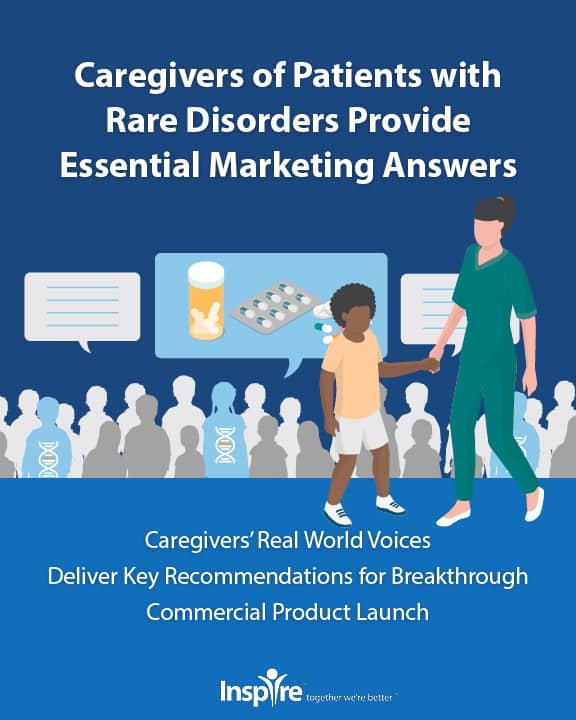Eosinophils: Friend or Foe? Eosinophilic Disorders

By Kathleen Hoffman, PhD, MSPH
Eosinophils are amazing, power-packed cells of the innate immune system. Loaded with granules of cytokines, chemokines, RNAses, cationic proteins, growth factors and more, these leukocytes were thought to be the body’s primary tool to destroy parasites. Now, however, eosinophils are being understood as regulators of inflammation and tissue regeneration. They are also involved in maintaining the defensive structure of the epithelium, residing in mucosal tissue that interfaces with the environment. Additionally, they act as antigen presenting cells (APCs), communicating between the innate and adaptive immune systems. They are part of the first line of defense, able to eject their mitochondrial DNA and other intracellular structures to form physical traps for bacteria that are outside of cells. The presence of RNAses indicates their role against viruses. Eosinophils also act as phages engulfing microbes in much the way that macrophages operate.1,2,3
Eosinophils are found in small numbers in the bloodstream, (1-4% of circulating white blood cells), as well as in the brain, lower intestines, ovaries, uterus, spleen and lymph nodes. However, when eosinophils are found in tissues like the lungs, skin or esophagus, usually after their discovery in high numbers in the bloodstream, serious damage may occur.1,2,3
Eosinophilic disorders (ED)
Multiple disorders come from the presence of an excess of eosinophils.4 People experiencing these rare conditions can be found across the Inspire platform. Almost 38,000 members belong to communities, have interest in, or have searched for information on eosinophilic disorders, and over 47,000 posts have been written on these conditions. Inspire has one community dedicated entirely to EDs,The American Partnership for Eosinophilic Disorder–EOS Connections Support community on Inspire, People experiencing EDs also belong to other communities on Inspire that include the American Lung Association Living with Asthma Support community and The Ehlers Danlos Syndromes and Hypermobility Spectrum Disorders Support community, among 18 other different communities.
This engagement across multiple communities reflects the diversity of experiences patients have with EDs. For example, Eosinophilic Asthma (EA) is a severe form of asthma. Though rare in the general population, between 50 and 60 percent of patients with severe asthma are EA. Discussions occur in the ALA’s Living with Asthma on Inspire, among others. Here, one caregiver looks for advice,
I’m the mother of a __child__who has eosinophilic asthma. He takes multiple medications for asthma, some at the highest dose available. He also takes __treatment__He missed school because he was homebound and so far this year I can’t count the amount of days he’s been absent. I know it’s starting to take out hard toll on him, and I try to support him as best I can. At this point I don’t know what else I can do to keep him motivated and positive. Anyone else out there that has this severe subtype of asthma that can offer suggestions.
One patient shared research they had done on triggers and another provided a list of ideas to help.
Patients living with Hypereosinophilic Syndrome (HES) have high levels of eosinophils in their blood which impacts organs such as the skin, heart, lungs, gastrointestinal tract and central nervous system. Eventually, they can damage these organs. HES symptoms can run in families. 4,5 As an example, this patient and parent described her treatment experience while asking for advice.
I was recently diagnosed with non-specific Hyper-Eosinophilia. (fluctuating between 1600-2300) I have been patient with my team of seven specialists and with trying what my allergist recommended. However, two and a half years after beginning to find a medical reason for my constant itching, massive hives with angioedema (which was after a year of grinning and bearing hives every single night) and (now) autoimmune lichenoid skin troubles, I still am no further on discovering what is causing my Eosinophilia. I have taken the antihistamines (didn’t help), I have been on __treatment__ (helped the hives, sent the Eosinophils sky high and caused respiratory and heart issues), I’ve weaned myself off __same treatment___, and now I’m back where I was. My doctor wants me to go back on ___same treatment___ (because I’m part of his study?), but I feel it is only a way to stop the symptoms, not the root cause. Should I push for more specific food and environmental allergy testing? My ___child___ has now begun breaking out in hives monthly.
In response, another member described a positive experience with another medication,
Wow! Sounds like where I have been for years! I had hives so bad that three different allergists took skin samples to have them tested. If you have not had them run tests on your hives do it. I have had autoimmune tests performed because I have many issues that fall under that category. I have eosinophilic asthma and my last episode put me in the hospital with chest tightness and inability to breathe. My heart rate and blood pressure went through the roof while my oxygen level plummeted. Steroid shots provide instant relief but do not answer my questions as to why. I too tried __treatment___ but developed a cough and shortness of breath. I am now on __new treatment___. It has been a game changer and my allergist says that studies are showing that it too fights against hives. Before starting __new treatment___my eosinophilic level was at 8+ (7 is considered high). After a few doses of ___new treatment___my levels went down to 0! My allergist jumped for joy.
Eosinophilic granulomatosis with polyangiitis (EGPA) is another rare condition with only two to five new cases per million per year. In EGPA, eosinophils cause blood vessel inflammation or vasculitis which restricts blood flow to organs. The vessels narrow which negatively affect the lungs, skin, gastrointestinal system, kidneys, muscles, joints and heart. The blood vessels walls weaken, increasing the risk of aneurysms. Without treatment, EGPA is fatal.4,6
Patients with this extremely rare disease have found each other on Inspire.
Few months ago I was diagnosed as having EGPA. Since then I completely lost my peace of mind. All my thoughts go around, one way or another, about the diseases. Currently, I am on ___treatment___and physically things are quite well (still eos 9.5), but as a side effect of the medication I think I am experiencing additional depressive emotions. My physician told me that accuracy of my diagnosis is 90 percent, since I lack of some features of EGPA, i.e. don’t have an asthma and certain antibodies. So, I am balancing on probably false hope and despair of reality of having an EGPA disease. Could you share your experience of accepting and living with this disease from emotional point of view? I would be extremely happy for any your shared thoughts and advices.
This member tried to help and reassure.
I was diagnosed in __date___ when EGPA was still known as Churg-Strauss. I was__age__ at the time and caring for my newborn daughter. It was very difficult as I felt extremely ill and fatigued for months before given a diagnosis and set on the right path- __several treatments named___. All were very helpful. I was fully functional, back to work and exercising and in remission until this past fall/winter. Re-hospitalized for 3 days and back on ___treatment___and started on ___new treatment___. I am feeling so so much better and on the road to recovery. Dealing mostly with side effects of ___treatment___which is life saving and detrimental all at the same time.
My heart goes out to you and everyone dealing with EGPA. It can be very trying at times, but in my experience, the setbacks are temporary and few and far between.
EGPA and other eosinophilic disorders are just one of the many rare disease communities found on Inspire. Patients with rare disease and their caregivers meet and share support and treatment information with each other, which they can then share with their physicians. Inspire is a vital partner with 40 rare disease non-profit advocacy organizations. This is where real world rare disease patients and caregivers congregate, making Inspire a vital source of information about what these patients are thinking and doing. Inspire has become an outstanding resource to reach patients and to learn what they need.
Inspire offers a trusted community to patients and caregivers. Our goal with this blog, this website and our content is to provide the life science industry access to the true, authentic patient voice. In so doing, we support faithful operationalization of patient-centricity. Take a look at our case studies, eBooks and news outlet coverage.
References:
1Shamri, R., Xenakis, J. J., & Spencer, L. A. (2011). Eosinophils in innate immunity: an evolving story. Cell and tissue research, 343(1), 57–83. https://doi.org/10.1007/s00441-010-1049-6
2Tashkin, D. P., & Wechsler, M. E. (2018). Role of eosinophils in airway inflammation of chronic obstructive pulmonary disease. International journal of chronic obstructive pulmonary disease, 13, 335–349. https://doi.org/10.2147/COPD.S152291
3Wen, T., & Rothenberg, M. E. (2016). The Regulatory Function of Eosinophils. Microbiology spectrum, 4(5), 10.1128/microbiolspec.MCHD-0020-2015. https://doi.org/10.1128/microbiolspec.MCHD-0020-2015
4https://apfed.org/
5https://www.mayoclinic.org/diseases-conditions/hypereosinophilic-syndrome/diagnosis-treatment/drc-20352856
6https://my.clevelandclinic.org/health/diseases/7098–eosinophilic-granulomatosis-with-polyangiitis-egpa-formerly-churg-strauss-syndrome






